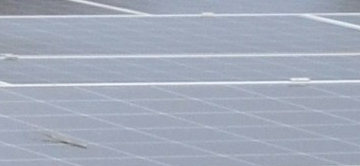Small modular reactors are the subject of intense research in all industrialized countries. For their supporters, they are the key to a successful ecological transition. For their detractors, they're just the wrong answer: nothing beats renewable energies. As ever, no one is completely wrong and no one is completely right. Small modular reactors will find their place in the energy mix, combined with other technologies that do not emit greenhouse gases.
Large and small scale
To decarbonize our economies, we need to generalize the use of electricity in industry, services, housing and transport. However, electricity must be produced using technologies that do not emit CO2 and are capable of meeting energy needs in real time. Wind and solar power satisfy the first condition, but not the second, as they are dependent on the weather and diurnal and seasonal cycles. Their coupling with storage units is technically feasible, but prohibitively expensive given the needs to be met, particularly in winter. Conventional nuclear reactors, with a power output of over a gigawatt of electricity, do not emit greenhouse gases, but lack flexibility, require considerable capital and encounter specific difficulties at their construction site. To get round these pitfalls, over the last ten years or so there has been a craze for "small modular reactors" (commonly known as SMRs), with outputs ranging from 10 to 300 megawatts of electricity. Because they are small in size, they cannot individually benefit from the economies of scale observed in large reactors, i.e. an average production cost per MWh that is all the lower the larger the output. But SMRs do offer a number of advantages, in particular modularization (separate manufacture of components, which are then transported and assembled at the operating site), simplification (high degree of passive safety) and standardization (learning gains). We can add to this a higher quality of assembled parts, and therefore less risk, since manufacturing takes place in controlled enclosed spaces. But these advantages are still only potential, as there are as yet no installations sufficiently developed to confirm expectations.
Innovation race
In fact, the industry is far from mature. According to the International Atomic Energy Agency, there are some 80 different SMR concepts under development, depending on the fuel used, the cooling mode, the degree of modularization, the number of units installed on a site, not to mention their mobility (some SMRs can be installed on a barge).
Of course, plurality creates emulation, but it also creates inefficiency, since the duplication of R&D efforts leads to expenditure that will result in the industrial or commercial failure of most competitors: in a patent race, only the first wins. Of course, he can then grant licenses to his unsuccessful competitors, but these concessions will be in his own private interests, not in the collective interest. Coordination by public authorities may therefore be desirable, especially since synchronizing individual efforts can speed up the development of innovation, provided of course that coordination is not misdirected.
Industrial policy
Given the stakes involved, it's hardly surprising to see public authorities taking up the issue. In the USA, the Department of Energy (DOE) has announced funding of $900 million to support the first deployments of Generation III+ small modular reactors. The European Parliament's wish "for the Union to maintain its technological primacy in the global race for supremacy in the future SMR market" is answered by the creation of a European Industrial Alliance for Small Modular Reactors, whose aim is to accelerate the development, demonstration and deployment of the first SMR projects in Europe early in the next decade. The Alliance will be superimposed on any national programs, such as the one being developed in France, and on partnerships between manufacturers. It brings together manufacturers, financiers, public authorities, regulators, training centers and potential users, notably hydrogen producers and electro-intensive industries. Its tasks include identifying the most promising technologies offering the best safety conditions. These technologies will then receive priority support from public funding, which should help avoid unnecessary duplication.
At the Alliance's general meeting on May 29 and 30, 2024, participants defined the next stages of their work and appointed European companies to chair eight working groups. Topics range from industrial application (Group 1) to financing (Group 8), including fuel cycles and waste management (Group 7), a highly sensitive subject likely to provoke backlash from public opinion. The priorities should become clearer this autumn, but we'll have to wait until the 1st quarter of 2025 for a general action plan. It won't be easy to get through all the hurdles of the Brussels procedures without delaying the program too much.





